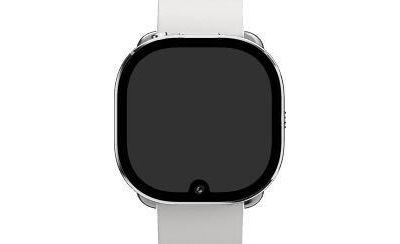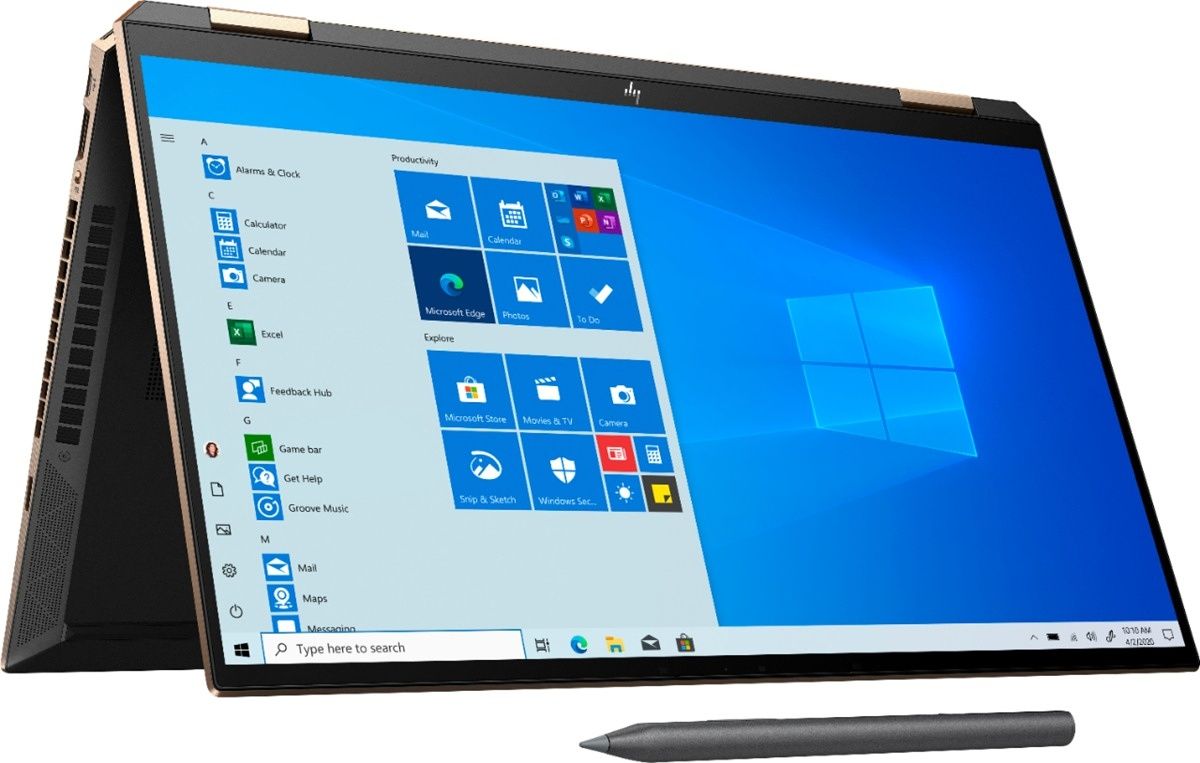Apple recently announced its brand-new MacBook Pro 2021 models powered by the Apple M1 Pro and M1 Max chipsets. These are seriously impressive laptops and are bound to be one of Apple’s very best. Of course, that begs the question: how does the MacBook Pro compare to some of its most prominent Windows rivals? In this article, we’re pitting the MacBook Pro against the HP Spectre x360, one of the most popular Windows laptops out there.
Both the MacBook Pro and the HP Spectre x360 come in different sizes, and thus, different specs. That makes comparing them a bit trickier, but we’ll try to account for all the different models you can choose for each one. Let’s dive right in, starting with a look at the specs for each laptop.
MacBook Pro vs HP Spectre x360: Specs
|
MacBook Pro |
HP Spectre x360 |
| Processor |
- Apple M1 Pro (unknown clock speed, 8-core) (14-inch only)
- Apple M1 Pro (unknown clock speed, 10-core)
- Apple M1 Max (unknown clock speed, 10-core)
|
- Spectre x360 13, x360 14:
- Intel Core i5-1135G7 (up to 4.2GHz, 4-core)
- Intel Core i7-1165G7 (up to 4.6GHz, 4-core)
- Spectre x360 15:
- Spectre x360 16:
- Up to Intel Core i7-11390H (up to 5GHz, 4-core)
|
| Graphics |
- 14-core GPU (M1 Pro, 14-inch only)
- 16-core GPU (M1 Pro)
- 24-core GPU (M1 Max)
- 32-core GPU (M1 Max)
|
- Intel Iris Xe Graphics
- NVIDIA GeForce RTX 3050 (Spectre x360 16)
|
| RAM |
- 16GB (M1 Pro only)
- 32GB
- 64GB (M1 Max only)
|
- 8GB (Spectre x360 13, x360 14)
- 16GB
|
| Storage |
|
|
| Display |
- 14.2 inch mini LED, 3024 x 1964, Wide Color (P3), True Tone, 120Hz, 1600 nits
- 16.2 inch mini LED, 3456 x 2234, Wide Color (P3), True Tone, 120Hz, 1600 nits
|
- Spectre x360 13:
- 13.3 inch IPS, Full HD (1920 x 1080), HP Sure View, touch
- 13.3 inch OLED, 4K (3840 x 2160), 400 nits
- Spectre x360 14:
- 13.5 inch IPS, Full HD+ (1920 x 1280), touch, 400 nits
- 13.5 inch IPS, Full HD+ (1920 x 1280), HP Sure View, touch, 1000 nits
- 13.5 inch OLED, 3K2K (3000 x 2000), touch, 400 nits
- Spectre x360 15:
- 15.6 inch AMOLED, 4K (3840 x 2160), touch, 400 nits
- Spectre x360 16:
- 16 inch IPS, 3072 x 1920, touch
- 16 inch AMOLED, 4K, touch
|
| Audio |
- Six-speaker stereo sound with force canceling woofers, Dolby Atmos
|
- Dual stereo speakers (Spectre x360 13)
- Quad stereo speakers (Spectre x360 14, x360 15)
|
| Webcam |
- 1080p front-facing webcam
|
- 720p webcam (Spectre x360 13, x360 14, x360 15)
- 5MP/1080p webcam (Spectre x360 16)
|
| Biometric security |
|
- Windows Hello IR camera
- Fingerprint reader
|
| Battery |
- 69.6Wh battery (14-inch)
- 99.8Wh battery (16-inch)
|
- 60Wh battery (Spectre x360 13)
- 66Wh battery (Spectre x360 14)
- 72.9Wh battery (Spectre x360 15)
- Spectre x360 16: Currently unknown
|
| Ports |
- 3 Thunderbolt 4 ports
- HDMI
- MagSafe 3 charging port
- SD card reader
- 3.5mm headphone jack
|
- Spectre x360 13, x360 14:
- 2 Thunderbolt 4 ports
- 1 USB Type-A port
- 3.5mm headphone jack
- microSD card reader
- Spectre x360 15, x360 16:
- 2 Thunderbolt 4 ports
- 1 USB Type-A port
- HDMI 2.0b
- 3.5mm headphone jack
- microSD card reader
|
| Connectivity |
|
- Intel Wi-Fi 6E AX210 (2×2), Bluetooth 5
|
| Colors |
|
- Nightfall Black
- Poseidon Blue (Spectre x360 13, 14, 15)
- Natural Silver (Spectre x360 13, 14)
- Nocturne Blue (Spectre x360 16)
|
| Size (WxDxH) |
- 14-inch: 12.31 x 8.71 x 0.61 in (312.6 x 221.2 x 15.5 mm)
- 16-inch: 14.01 x 9.77 x 0.66 in (355.7 x 248.1 x 16.8 mm)
|
- Spectre x360 13: 12.08 x 7.66 x 0.67 in (306.8 x 194.6 x 17 mm)
- Spectre x360 14: 11.75 x 8.67 x 0.67 in (298.5 x 220.2 x 17mm)
- Spectre x360 15: 14.17 x 8.91 x 0.79 in (359.9 x 226.3 x 20mm)
- Spectre x360 16: Currently unavailable
|
| Weight |
- 14-inch: Starting at 3.5lbs
- 16-inch: Starting at 4.7lbs
|
- Spectre x360 13: Starting at 2.8lbs
- Spectre x360 14: Starting at 2.95lbs
- Spectre x360 15: Starting at 4.23lbs
- Spectre x360 16: Currently unavailable
|
| Starting price |
$1,999.99 (14-inch), $2,499 (16-inch) |
$949.99 (x360 13), $1,199.99 (x360 14), $1,449 (x360 15), $1,639 (x360 16) |
Unlike the MacBook Pro, the different sizes of the HP Spectre x360 have significant differences in terms of specs, too. The HP Spectre x360 16 specifically is a very different laptop from the rest of the lineup. Keep in mind, some information about the Spectre x360 16 isn’t available yet due to it not being available to buy at writing time.
Windows or macOS
No matter which size you choose, one of the biggest deciding factors between these two laptops comes from the operating system. The MacBook Pro (naturally) runs macOS, specifically the latest version, macOS Monterey. macOS is sometimes considered more accessible to newcomers, with a straightforward interface and less confusing options. It’s also a very popular choice for content creators, thanks in big part to software like Final Cut Pro, which is exclusive to macOS.
On the other hand, the HP Spectre x360 runs Windows, with most models now shipping with Windows 11 on board. Even if you get a unit with Windows 10, however, you’re going to be able to upgrade to Windows 11 for free. Windows offers a more open ecosystem and it’s far more popular, so there are a lot of apps and programs that are only available on Windows or that get much stronger support on Windows. Games are a notable example, with Windows being the premiere platform for PC gaming while Mac misses out on many titles.
At the end of the day, though, you’re likely already familiar with at least one of these, and your choice is already made for you right here. If you like Windows more, the HP Spectre x360 is your choice, but if you prefer macOS, you need the MacBook Pro.
Performance: The MacBook Pro steamrolls the competition
We may have said that the HP Spectre x360 comes in very different configurations depending on the size, but despite that, there’s no getting around the fact that the new MacBook Pro models are far more powerful. Performance was a big focus for the Apple M1 Pro and M1 Max inside the latest MacBook Pro models, and for good reason. The laptops offer staggering performance for both the CPU and GPU. Both the Apple M1 Pro and M1 Max have a similar CPU (aside from the entry-level M1 Pro on the 14-inch model).
No matter which model you choose, the HP Spectre x360 is slower than the MacBook Pro.
Meanwhile, the HP Spectre x360 comes with up to an Intel Core i7-1165G7 processor in most models, while the Spectre x360 16 comes with up to an Intel Core i7-11390H. While the Spectre x360 16 is significantly more powerful than the smaller siblings, it’s still a far cry from the Apple M1 Pro. As you can see in the table below, the Apple M1 Pro nearly doubles the multi-core performance of even the most powerful Spectre x360.
As for the GPU, the difference is just as stark, if not more so. The Apple M1 Pro and M1 Max have significantly different GPUs, but Apple compared the M1 Max to an NVIDIA GeForce RTX 3080 laptop GPU running at 105W of power (as found in the Razer Blade 15 Advanced). Those two GPUs have a similar level of performance. However, most of the Spectre x360 models come with integrated graphics, which are far from that level of power. The HP Spectre x360 16 has an optional NVIDIA GeForce RTX 3050 Ti, but even that isn’t very close to an RTX 3080. It’s clear that the MacBook Pro comes out on top here, even though the M1 Pro is probably going to be much closer in terms of performance, at least compared to the Spectre x360 16.

Image: Apple
What’s even more impressive about that is that the Apple M1 Pro and M1 Max achieve this level of performance while being far more efficient than a typical Windows laptop. That gives the MacBook Pro another likely advantage, which is battery life. The smaller Spectre x360 models may still have good battery life, but if you get a Windows laptop with dedicated graphics, it’s going to take a big toll.
The MacBook Pro’s unified memory means it has much more GPU memory than a typical graphics card.
The RAM and storage configurations are also more impressive on the MacBook Pro, which can be had with up to 64GB of unified memory and 8TB of SSD storage. Those upgrade options are definitely expensive, but at least you have them, while most of the Spectre x360 models max out at 16GB of RAM and 2TB of storage. It’s also important to note that Apple’s unified memory means the GPU and CPU can both access that memory equally, meaning you get a lot more GPU memory than on any Windows laptop, another big advantage for GPU-focused workloads.

It’s undeniable that the MacBook Pro is more powerful, but before you decide that’s what you want, keep in mind this extreme power is only really meant for a subset of users. If you’re browsing the web, watching movies and videos, writing up documents, and so on, both of these laptops will serve you just fine. The difference will be in more specific workloads, like video editing or 3D rendering, which not everyone needs.
Display: The MacBook Pro has mini LED, the Spectre x360 has OLED
With the new MacBook Pro, Apple made some big improvements to the display with the transition to mini-LED. This allows the display to have hundreds of dimming zones, meaning areas of display can adjust their brightness separately from one another. It gives some benefits similar to OLED, like the 1,000,000:1 contrast ratio and power savings when looking at images with a lot of black. It’s also an incredibly bright display, capable of reaching up to 1600 nits of peak brightness and 1000 nits of sustained brightness. On top of that, they’re very sharp panels, with the 16-inch model specifically having near 4K resolution.

Meanwhile, the HP Spectre x360 uses typical IPS displays for its base configuration, but all the models allow you to upgrade to an OLED panel, which is better than miniLED in some ways. With OLED, instead of dimming zones you get individually backlit pixels. Every single pixel can adjust its own brightness, offering even better contrasts and removing the halo effect you might see with mini-LED panels. Depending on the model you get, these screens are even sharper than the MacBook Pro, too. Regardless of some differences in resolution, all of these displays are more than sharp enough considering their size.

Spectre x360 13, 14, and 15
Where the HP Spectre x360 loses some ground is display brightness, which can reach up to 400 nits on most of these panels, specifically the OLED ones. That’s still more than visible indoors, and you can probably use them outside without too much trouble, the MacBook Pro is just significantly better in that regard. However, the Spectre x360 has some advantages in the form of touch and pen support (it is a convertible, after all) and the option for an integrated privacy screen if you want to keep your information safe from people around you. The privacy screen requires you to give up OLED, but at least you have the option.
The HP Spectre x360 gives you touch support and options for a privacy screen.
Sound is one area where the MacBook Pro has been dominating for a while, featuring a six-speaker setup while most Windows laptops max out at four. That’s the case here, too, and Apple says it actually made the sound system even better in this year’s MacBook Pro. Most of the HP Spectre x360 models have quad speakers, and that’s still going to give you a great experience, just not as good. And the 13-inch Spectre x360 only has two speakers, so it’ll be behind all of those.
Where both of these laptops fall short is the webcam, but for different reasons. Apple decided to maximize the screen area and also increase the webcam resolution to 1080p with the MacBook Pro 2021 models. However, to do both of those things at the same time, it added a notch in the center of the screen, which looks odd, especially on a laptop. HP avoided that but to keep bezels as small as possible, it created a tiny 720p webcam that doesn’t have very good quality at all. Ultimately, you have to choose between a good webcam and having an uninterrupted display, which isn’t ideal either way.

Design: The HP Spectre x360 is beautiful and more portable
One area where the HP SPectre x360 easily ousts the MacBook Pro 2021 models is the design. First off, the biggest difference is that the SPectre x360 is a convertible, meaning you can use it as a regular laptop, but you can also rotate the screen all around and is it as a tablet. And while convertibles tend to be heavier, Spectre x360 13 and 14 are both much lighter than the MacBook Pro 14-inch, and they’re also smaller in most dimensions aside from thickness. Similarly, the Spectre x360 15 is noticeably lighter than the MacBook Pro 16-inch. If you’re travelling a lot, that difference in weight is going to make a difference.

But what makes the Spectre x360 truly more interesting is how it looks. The MacBook Pro comes in Silver or Space Gray colors, which are just variations of gray. With the HP SPectre x360, you get Nightfall Black and Poseidon Blue, two stunning dual-tone designs that really stand out. Nightfall Black combines black with copper accents, and Poseidon Blue mixes dark blue with gold accents. With the 13-inch and 14-inch models you can also get a silver version if you want. The Spectre x360 16 does away with the dual-tone look, however, and you can just get it in Nightfall Black or Nocturne Blue.
The Spectre x360 family also has some iconic design elements, like the cut-off corners below the display, which make room for angled ports. These can make it easier to plug in some peripherals without them getting in the way, and they make for a unique look compared to most laptops.
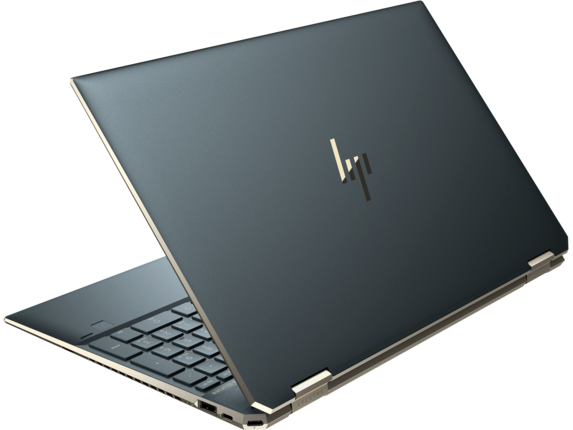
Spectre x360 15 in Poseidon Blue
However, when it comes to ports, the MacBook Pro is more versatile, especially compared to the smaller Spectre models. The MacBook Pro includes three Thunderbolt ports, HDMI, an SD card reader, a headphone jack, and a MagSafe 3 connector for charging. That covers most of your basic needs, aside from USB Type-A for some peripherals, and the return of MagSafe means you don’t have to worry about tripping on the charging cable.
The MacBook Pro has a more versatile port selection, minus USB Type-A.
The Spectre x360 includes two Thunderbolt 4 ports, one USB Type-A port, a headphone jack, and a microSD card reader. For the 15-inch and 16-inch models, you also get HDMI and a proprietary barrel-type charger. This still covers most of your bases, but the lack of HDMI on the smaller models can be a big deal, and you get one less Thunderbolt port, too. There’s also nothing like MagSafe here.
Conclusion: Should you choose the MacBook Pro or HP Spectre x360?
The MacBook Pro 2021 models and the HP Spectre x360 are two fantastic devices with good reasons to prefer one over the other. The decision here comes down to what you’re looking for in a laptop. The MacBook Pro is pretty much the ultimate pro laptop if you need performance. With the Apple M1 Pro and M1 Max, up to 64GB of unified memory, and 8TB of storage, there’s very little you can’t do with that kind of performance. And it does it with impressive power efficiency, too. Plus, it has a stunning mini-LED display and a wide range of ports that means you can connect peripherals much more easily now.
The HP Spectre x360 is a premium convertible laptop that’s meant to be portable. For basic day-to-day tasks, it’s still going to perform great, and it also has a stunning display if you choose the OLED options. Plus, it’s a convertible, so if you want the versatility of using your PC as a tablet, this is the way to go. It’s lighter than the MacBook Pro, and it looks stunning in its various color options and sizes. It’s also worth noting that with the different sizes, you can choose different aspect ratios for the display, so you can find what’s just right for you.

There’s also the matter of price, and it’s worth pointing out that the MacBook Pro starts at a much higher price than the HP Spectre x360, and it can cost you over $6,000 if you want to upgrade everything. The HP Spectre x360 is a more affordable option that’s still great in many ways.
And, of course, as we mentioned before, there’s the matter of the operating system, which is likely one of the biggest factors in deciding between these two. If you prefer Windows, you’ll choose the HP Spectre x360, and if you prefer macOS, you’ll choose the MacBook Pro. It’s all about preference and your needs, and you can pick your favorite using the links below. If you choose the MacBook Pro and you want to protect your investment, check out our list of the best cases for the MacBook Pro.
The MacBook Pro is a powerful laptop thanks to the M1 Pro and M1 Max chipsets, making it far more powerful than any Windows ultrabook.
The HP Spectre x360 13 is a lightweight premium convertible with high-end Intel processors and a stunning design.
The HP Spectre x360 14 is a lightweight premium convertible with a premium design, a 3:2 display, and high-end performance.
The HP Spectre x360 is a large 15-inch convertible with 11th-generation Intel processors and a beautiful dual-tone look.
The largest SPectre x360 model has a 16:10 display, Intel H35 series processors, and optional NVIDIA graphics.
The post MacBook Pro vs HP Spectre x360: What laptop should you get? appeared first on xda-developers.






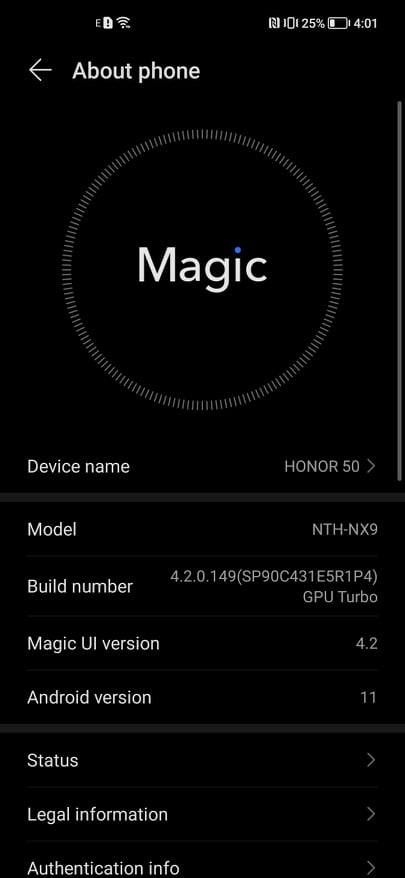
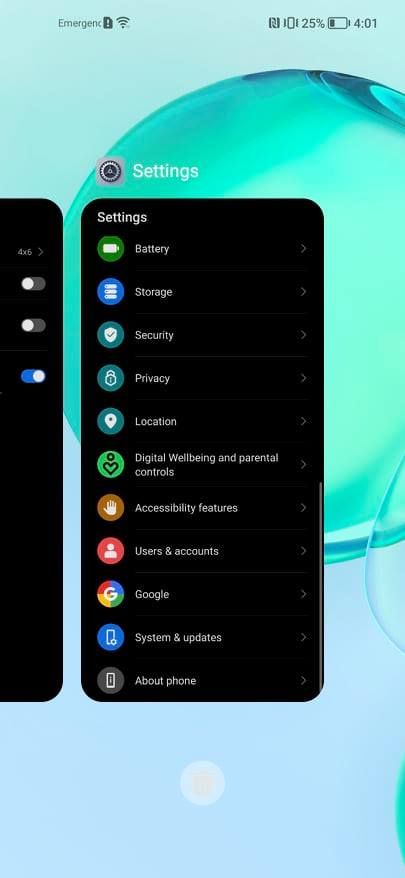


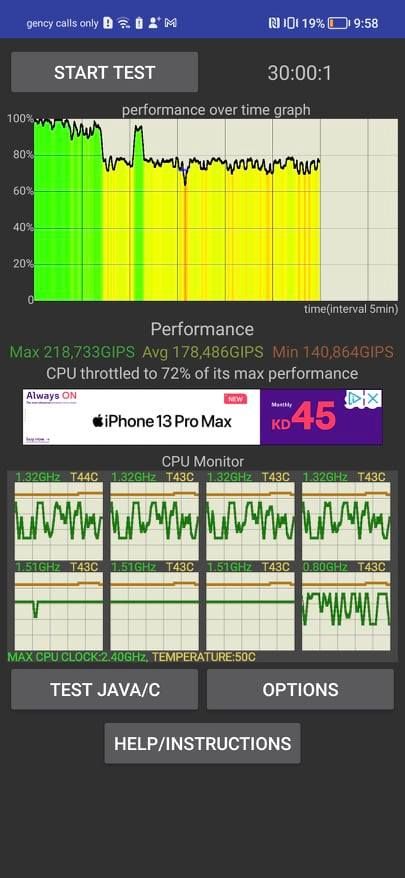

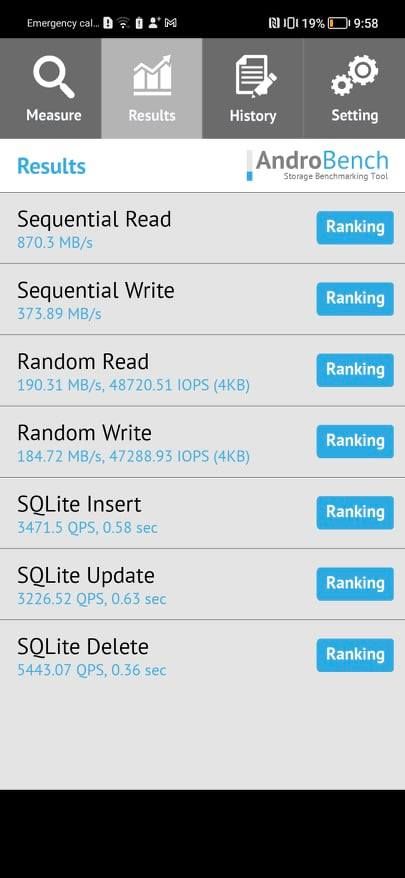



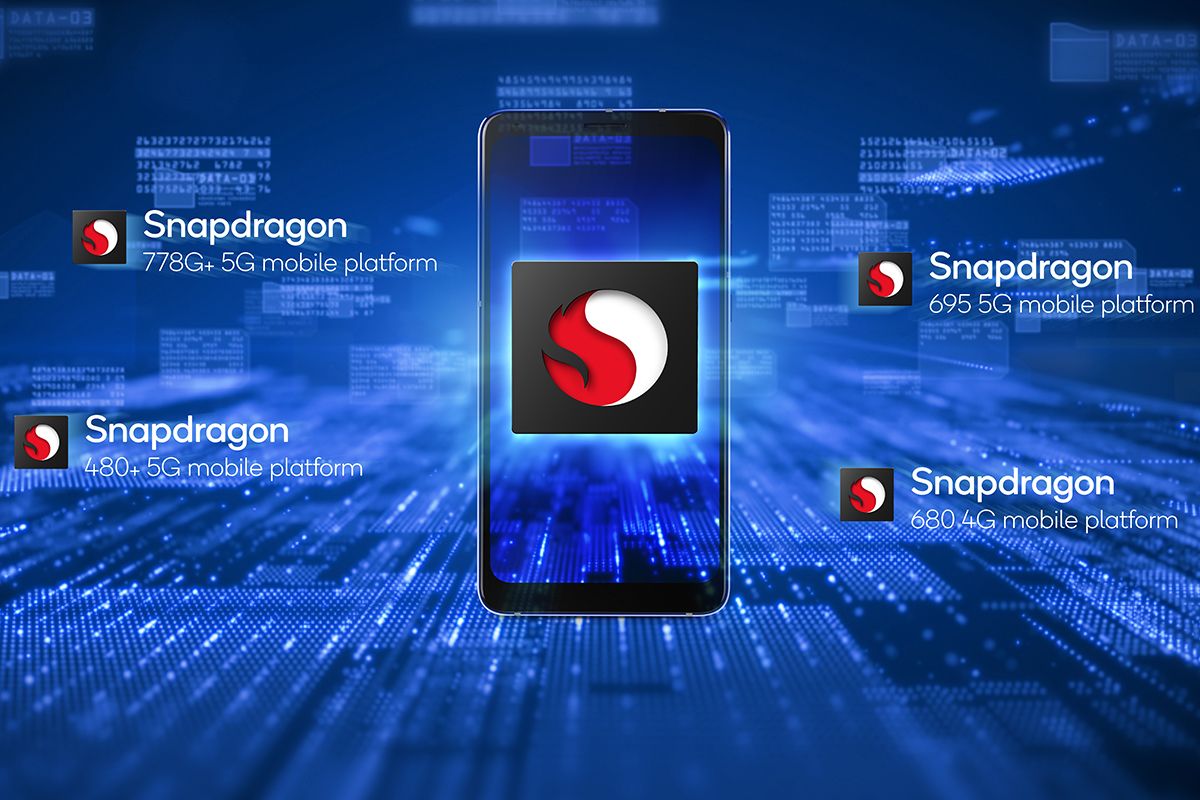

 (@kacskrz)
(@kacskrz) 

